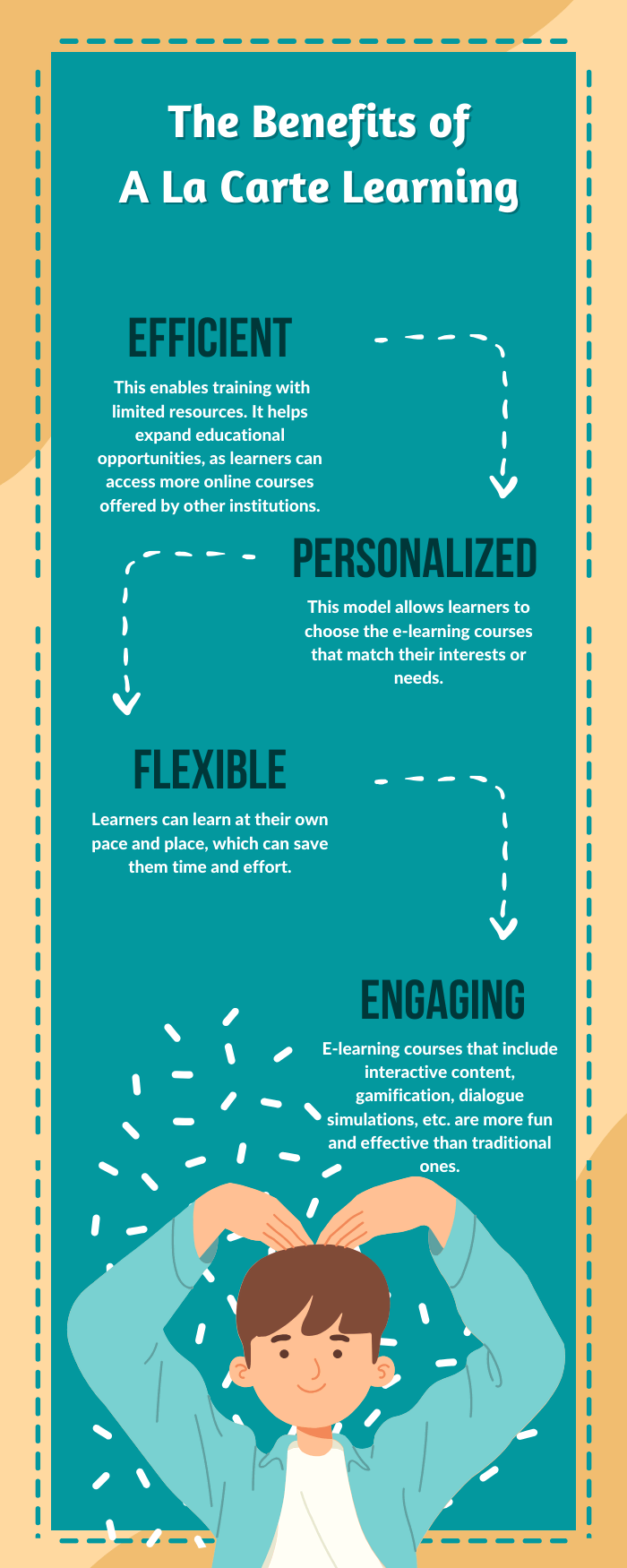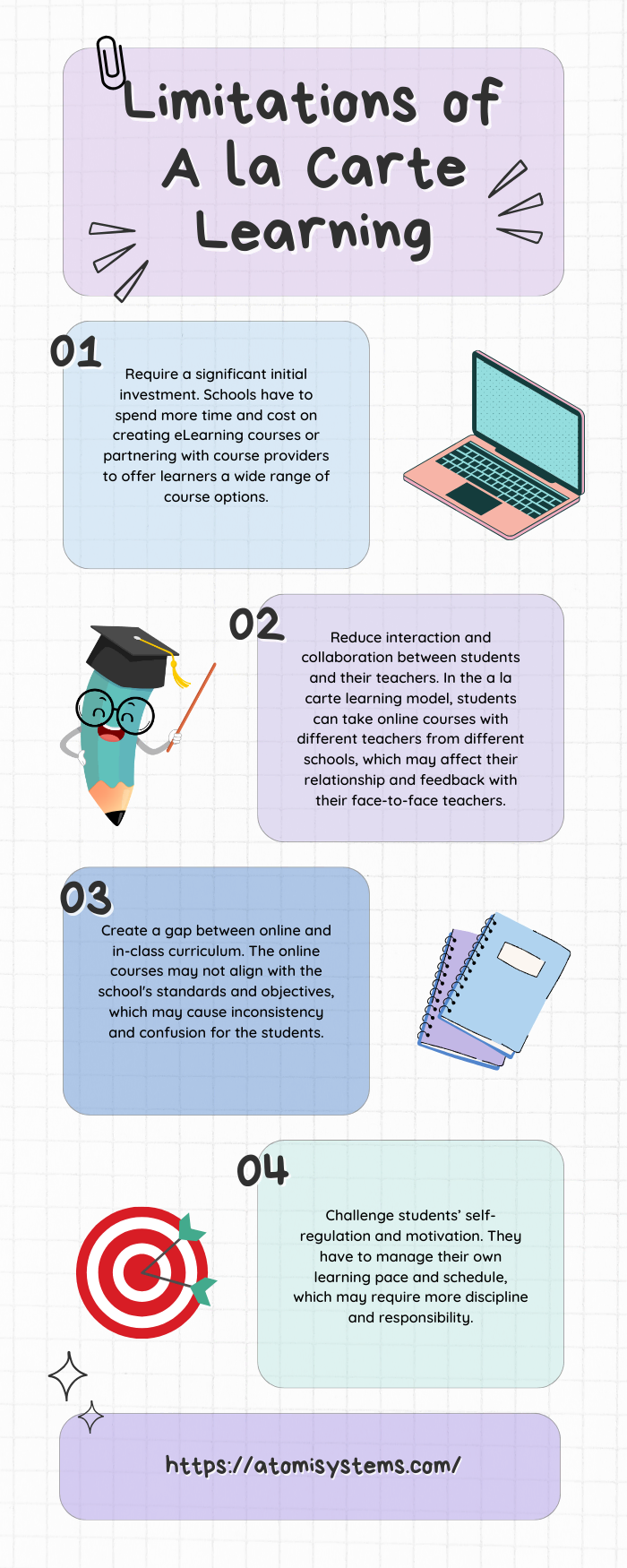Are you familiar with the a la carte learning model – a type of blended learning? What is it, and how can it benefit your training program? In this blog, we will explore this model in more detail.
In our previous blog, we introduced the four most common blended learning models. They are rotation model, enriched virtual model, a la carte model, and flex model. Each model has its own features, advantages, and drawbacks. Today, we will focus on the a la carte model and how it works.
What is the A La Carte Learning Model?
A la carte is a type of blended learning that integrates online and in-person learning activities. It enables learners to select online courses from a range of options that match their interests or needs, besides the regular face-to-face courses they take at school. The online courses may be offered by other schools or course providers, which requires schools to partner with them to expand the choices. This model can offer students more flexibility, personalization, and choice in their learning process. However, it also has some drawbacks, as explained in the next section.
Before we begin, let’s me briefly introduce our winning star ActivePresenter, an all-in-one eLearning authoring tool for creating fully responsive eLearning courses. With ActivePresenter, you can create slide-based courses, video courses, software demo video, video courses with ease.

Benefits of A La Carte Leaning Model

A la carte learning model is a popular option in both educational and corporate settings. Let’s explore which benefits it brings.
- Enable training with limited resources: It helps expand educational opportunities, as learners can access more online courses offered by other institutions.
- Personalize learning path: This model allows learners to choose the e-learning courses that match their interests or needs.
- Provide flexibility: Learners can learn at their own pace and place, which can save them time and effort.
- Create more engaging and interactive learning experiences: E-learning courses that include interactive content, gamification, dialogue simulations, etc. are more fun and effective than traditional ones.
Limitations of A La Carte Learning Model

Apart from benefits, this model also has some limitations:
- Require a significant initial investment. Schools have to spend more time and cost on creating eLearning courses or partnering with course providers to offer learners a wide range of course options.
- Reduce interaction and collaboration between students and their teachers. In the a la carte learning model, students can take online courses with different teachers from different schools, which may affect their relationship and feedback with their face-to-face teachers.
- Create a gap between online and in-class curriculum. The online courses may not align with the school’s standards and objectives, which may cause inconsistency and confusion for the students.
- Challenge students’ self-regulation and motivation. They have to manage their own learning pace and schedule, which may require more discipline and responsibility.
Model in Action
If you are still confused about the a la carte learning model, or don’t know how to take it in action, take a look at the examples below:
- A high school has nearly 1500 students in grades 6-12. The school may not be able to offer a wide range of elective courses. To solve this problem, it can partner with a course provider like Pamoja that hosts all of their courses on their learning platform. It enables students to access learning materials and interact with Pamoja teachers and peers from around the world. The learning platform also allows teachers to monitor the students’ learning activities. Moreover, teachers or school staff are on site to provide technical or face-to-face support as needed.
- A high school student who is interested in computer science but does not have any teachers who specialize in this field can enroll in an online course, in addition to their regular classes at school. The online course is taught by a qualified teacher from another school who communicates and supports the student through email or video calls.
- One of your students needs extra help with math. So, he can enroll in an online course that provides remedial lessons and practice exercises. The online course is created by the same teacher who teaches the face-to-face class, and uses adaptive software to adjust the content to his level.
So, you’ve learned about a la carte learning model. Hope that it can benefit your training program.
Besides, if you are finding an eLearning authoring tool to create online courses for your training, ActivePresenter may be an ideal option. It helps create interactive quizzes, software simulations, gamification, and more. Furthermore, don’t forget to visit our website, demo page and YouTube channel to learn more.

See more:
Table of Content